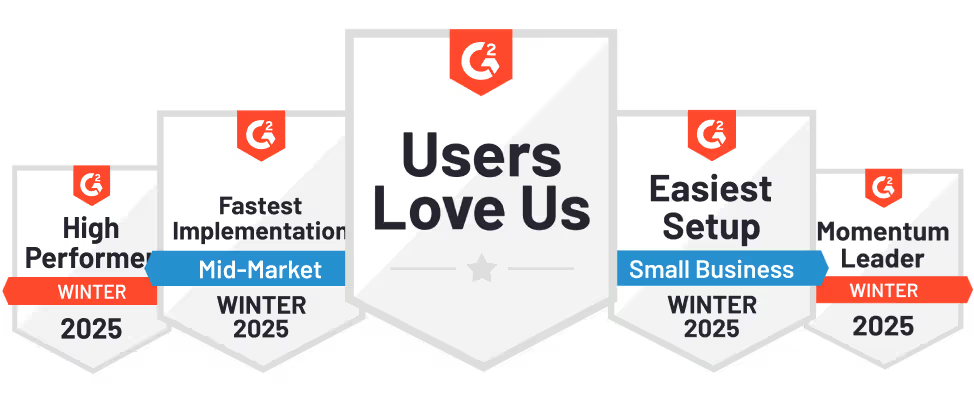If you skip TOFU ads, you’re invisible. Buyers don’t enter LinkedIn ready to buy; they enter to learn. The earlier you influence potential customers, the stronger your pipeline becomes. TOFU builds trust, positions your brand as a category leader, and ensures when buyers think solution, they think of you.
Kamel Bin Yacoub, founder of GetUpLead, recommends not setting “conversion” as an objective right away:
“If you don't have around 100 conversions/month, it won't work. We have tested so many times the conversion objective versus the website visit objective. It is best to use if you want to conversions on a landing page.
Starting with website visits is smart; it’s less costly and performs much better.”
💡For the top of the funnel campaigns, we suggest keeping website visits as your objective. This would help you drive traffic to the website and build a cookie pool for remarketing on channels like Google, LinkedIn, and Facebook.
How TOFU Ads Pay Off
- Decreased CAC Over Time: Cold audiences become warm audiences, lowering conversion costs later.
- Audience Building: LinkedIn allows you to retarget video viewers and ad engagers; awareness campaigns fuel these lists.
- Brand Trust: Consistent exposure signals authority. Buyers trust brands they see regularly.
Our recommendation is to go with an 80/20 split when running ads for brand awareness: 80% value-based messaging to educate users and 20% product-focused messaging to pitch your features.
Strategies for TOFU Ads
When running LinkedIn awareness campaigns, the goal isn’t to hard sell – it’s to position your SaaS brand as a trusted resource and thought leader. Buyers are likelier to remember brands that educate or help them solve a problem, even if they’re not actively searching for a solution.
Leading with industry insights, pain points, and influencer-backed content builds trust and drives top-of-funnel engagement. It lays the foundation for lead generation and nurturing later.
Sponsored Video or Carousel Ads
When running awareness ads on LinkedIn, prioritize capturing attention by offering value, not pushing product features. Sponsored video and carousel ads are ideal for this because they allow you to break complex ideas into digestible, engaging content. The focus should be educating your audience about pressing industry problems, market trends, or new frameworks that spark curiosity.
Keep your videos short (ideally under 45 seconds) and make each carousel slide deliver a concise, compelling insight. For example, a video could start with a stat like, “80% of product launches fail due to poor internal alignment,” followed by three quick tips on how to avoid this.
Similarly, a carousel could cover “5 Warning Signs Your Marketing Funnel is Broken,” with each slide addressing a different sign. This type of content positions your brand as a resource, planting seeds for future engagement.
Optimize your ads for mobile consumption. Use bold visuals, ensure text is large enough to read on small screens, and always include closed captions since many LinkedIn users scroll in silence. Additionally, experiment with different formats – test longer vs. shorter carousels or varying video styles – to identify what resonates most with your audience.
Here’s an example of How Salesforce runs ads about their new offering, “Customer 360”. As you can see, they’ve used multiple slides to explain various aspects of the product, along with how it can benefit both sales and CS professionals.

Collaborate with Thought Leaders
Joining forces with influencers and thought leaders helps humanize your brand and extend your reach into communities that trust these individuals. Working with subject matter experts (SMEs) positions your SaaS brand as a credible voice in the industry, even if the ad itself isn’t directly product-focused.
A common tactic is to craft organic LinkedIn posts, blogs, or videos featuring these influencers and amplify them through Sponsored Content ads to ensure they reach a broader audience.
For example, imagine your product lead or CEO writes a post about “The Future of AI in Marketing Automation.” While the post isn’t promotional, it establishes thought leadership and subtly highlights your expertise. Boosting this post as an ad extends its lifespan and puts it in front of your target decision-makers.
Our founder, Srikrishna Swaminathan, posted how G2 influences B2B buyer decisions to promote our eBook on how you can use G2 intent signals to drive revenue growth.

Another option is to create a short video interview with an influencer about common SaaS pain points. At the end, you can brand the video with your logo.
To make the most of these collaborations, choose influencers who align with your niche and whose audience reflects your ideal customer. The tone should feel personal and insightful, not overly polished or sales-driven.
Repurpose long-form content from webinars, podcasts, or interviews into bite-sized LinkedIn posts or short clips, turning one influencer engagement into multiple awareness assets.
💡Use LinkedIn’s Brand Lift Testing to measure brand perception and awareness changes, ensuring data-driven optimization.











